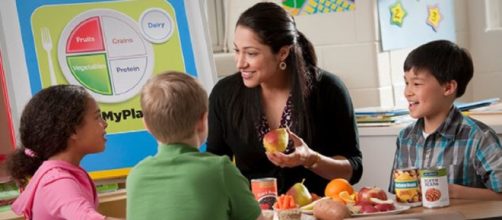Oral language skills are an Integral Part of the learning process as the teacher talks to teach making learning an oral language activity. Development of literacy depends on oral language. Oral language and literacy development are intricately intertwined in a grand way. Normally children arrive at preschool already speaking, and with the ability to use and manipulate their native language at early stages of proficiency. This is a huge help to teachers as this gives them a reference point where they can begin teaching reading, writing, and comprehension of the written word.
Communication
The relationship between oral language and literacy development is very simple to see. Humans communicate with oral language. Oral language fills our lives even as we write down a grocery list or call the babysitter to cancel. Every word we read, write, or understand is first understood as a series of complex sounds put together to form what we have learned to recognize as a coherent communication medium called oral language. Everywhere we go is the proof that oral language is integrated into every aspect of our lives. The thought may occur that silent retrospection while in private activities may not involve oral language, but there is that voice in our mind speaking our thoughts.
The link can also be seen between oral language and literacy in reading as the mind relates the written language to the sounds of oral language.
Deficiencies
Some abilities and deficiencies in language can be seen most clearly in English as a Second Language class. These students generally arrive with a mother language such as Spanish, but none or very little of the language to be studied. Abilities here can be noted in the mother language and the facility with which the two languages can be compared such as "To Be" verbs which are common in both English and Spanish. Deficiencies can be seen also in comparing the two languages. As the two languages are completely different, there are concepts that simply do not translate.
This can be difficult for whatever student to understand. Modal verbs which convey conditional meanings in English such as "If I were distracted, I would forget." simply do not translate to Spanish in a way that makes sense. In Spanish talking about the past with a conditional future mode simply is not possible with clarity.
Handicaps
Other abilities and deficiencies could be related to disabilities such as dyslexia. Students who have dyslexia may see letters in a different and jumbled way when compared with the rest of the world. This presents a huge extra burden on the student to learn to read and write. They first must learn to recognize the letters and numbers and other shapes as others do.
Bilingual student advantages
Bilingual students may present an extra ability above and beyond that of regular students as these students may have more insight into how oral language works in the world. With a second language comes partial to full cultural immersion into a world other than that of the student. Though most regions in the United States will not allow for complete immersion, it is possible in some locations in New York City and surrounding cities. Miami also has a large fully Latino set of neighborhoods where the culture is basically just like where these citizens came from. Los Angeles is another center of culturally diverse neighborhoods with many different cultures being represented through the whole city.
Culture and language
What does culture have to do with oral language and literacy success one might ask? The answer is more complex than it seems. Take Spanish as an example. There are hundreds of dialects and as many culturally unique peoples in Latin America and Europe. Each of these cultures has nuances, beliefs, idioms, sayings, advantages, and disadvantages when compared with any of the others. All of these are unique. One might meet a person from South West Colombia and assume they enjoy eating jalapeño peppers since they are Latino like the Mexican people to the South. One might assume the Spanish spoken by these two Spanish speaking locations would be the same. In both instances, they would be mistaken.
Accents, local idioms, even tone and inflection are different. Though the same approach could be used with both locals to teach reading and writing there will be noticeable differences.
Strategy
Language and literacy strategies involving reading along with the teacher, rereading, and retelling are great strategies for encouraging the development of early literacy skills. These times will give students from other cultures time and exposure to the way things are done in this cultural environment while being a fun activity.
Stories as strategy
Strategies involving students recounting of stories, writing their own stories, reading and coloring storybooks, and other like activities will help promote literacy.
Playing games such as "Simon Says" riddling, word games, and much more can be used to entertain while teaching young children in their mother language and also in a second language. Children of any culture will enjoy activities where they feel they are the focus of interest which makes storytelling a wonderful activity for them. Imagination is encouraged and built upon with the use of oral language to tell the story to others. Then the other students can retell the story, ask questions, and tell their own stories as well.
Classroom strategy
Much, if not all this strategic teaching and learning, can be used in the classroom as well as in the home. In fact, reinforcement in the classroom and at home will help the student improve in oral language and literacy.
Literacy is fully dependent on oral language development whose model for learning can be seen directly in the home. Modeling after this dynamic form of learning will allow the classroom to become as dynamically interactive and effective as in the home.


